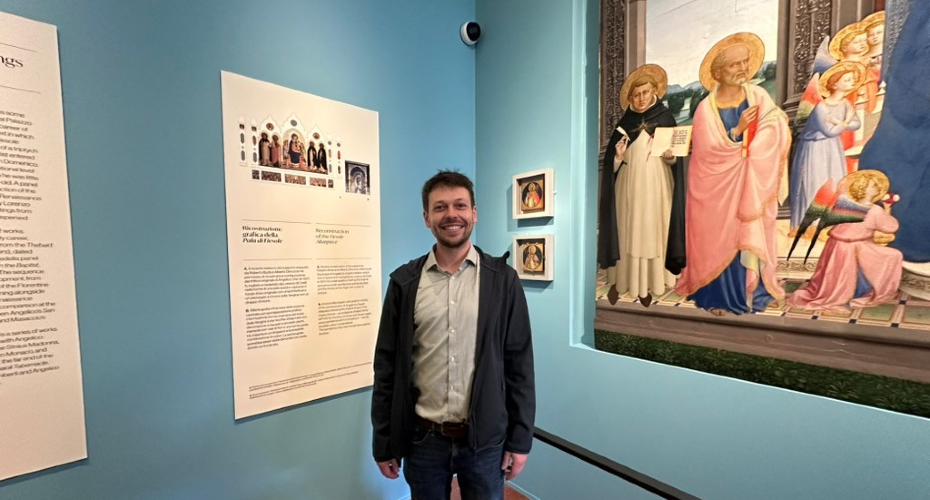A beautiful altarpiece finished by a Renaissance-era master painter has been digitally reconstructed by scholars at the University of Exeter for an international exhibition.
The Strozzi Altarpiece, with its stunning central 'Deposition', has been mapped and modelled by specialists in Art History and Visual Studies at Exeter, along with the chapel in the sacristy of Santa Trinita in which it was originally located.
Members of the Florence4D project, which the University runs in collaboration with counterparts in Cambridge, worked alongside the curators of the Fra Angelico exhibition to visualise how the chapel would have originally looked during the time of the eponymous painter.
The work is now on public display, alongside the altarpieces shipped in from collections around the world, at Palazzo Strozzi and the Museo di San Marco in Florence. Members of the team were invited to attend the opening of the exhibition on 25 September.
"This commission has been a complex piece of work, and it's wonderful to see it now showcased on such an international stage," said Luca Brunke, the PhD student who has spent the past year creating the models. "And it demonstrates again the potential of this technology to transport us back through time to appreciate heritage sites as they once were."

Coordinated by Professor Fabrizio Nevola, alongside lead curator Carl Brandon Strehlke, Luca used laser scans that were taken of the chapel in 2021. He then edited them, reinstating the original floor design, wooden choir, and other features, including two paintings that were known to have been produced for the space. For the altarpiece, Luca had to realise the vision of the curators for how its painted panels would have been assembled in its original form.
Both digital reconstructions are now hanging in the gallery alongside the original paintings to provide context for visitors, and they have also been included in the exhibition's catalogue.
"As you can imagine, with a large number of curators, there were competing theories and opinions about how the chapel would have looked during the time of Fra Angelico," says Professor Nevola. "We had to be flexible to accommodate these requests, but the collaborative nature of the commission often enabled us to update the model in real-time."
The exhibition has been featured by major media outlets, including the New York Times, for its achievement in bringing together more than 140 works across the two Florentine venues. Running until January, it is anticipated that it will cement Fra Angelico's reputation among the masters of Renaissance painting.
The involvement of the team from the Department of Languages, Cultures and Visual Studies stems from the Florence4D project, which has, since 2019, utilized analogue historical data in the form of archival records or drawings to create 3D models of how buildings would have appeared in the Renaissance era, along with the artworks they contained. Many of these case examples have been featured in exhibitions at venues including the V&A and National Gallery in London, and the Museo degli Innocenti in Florence.






